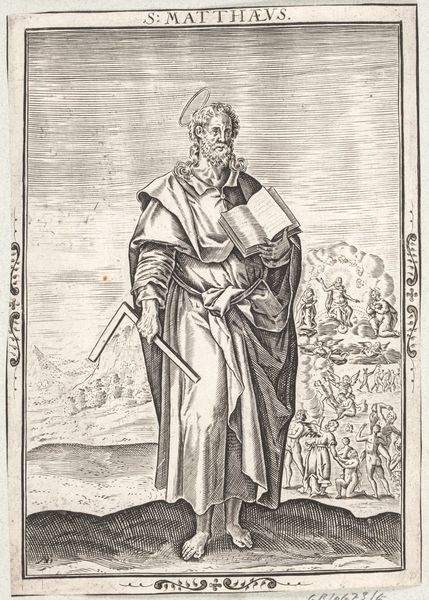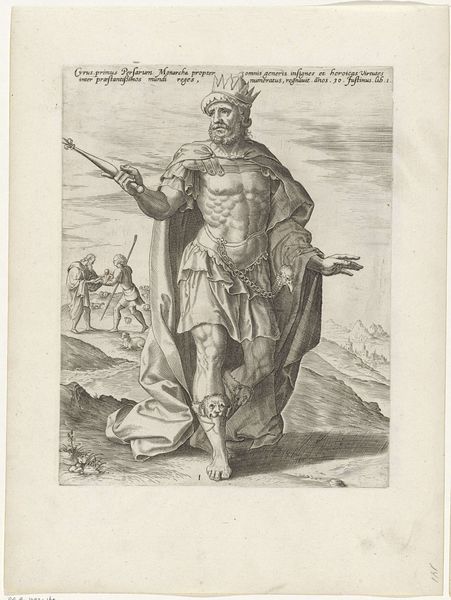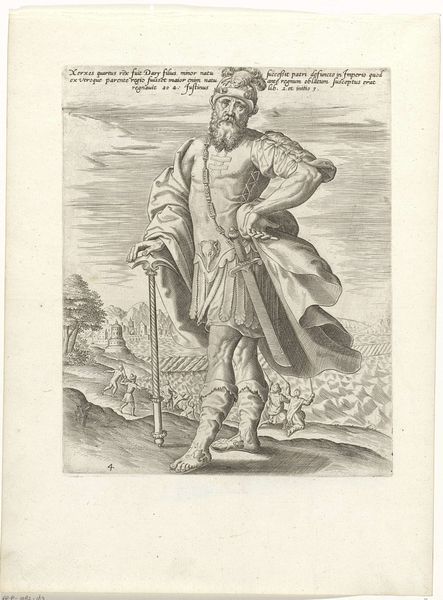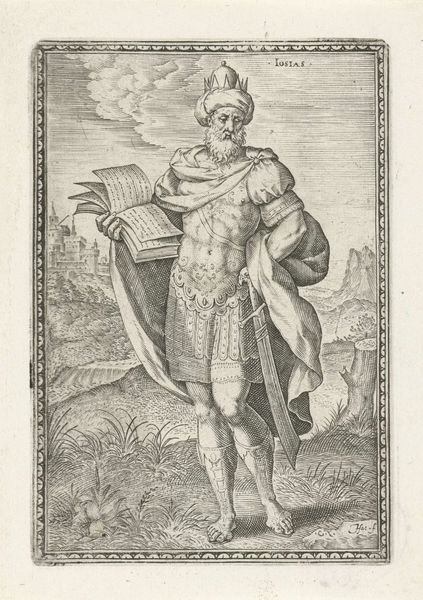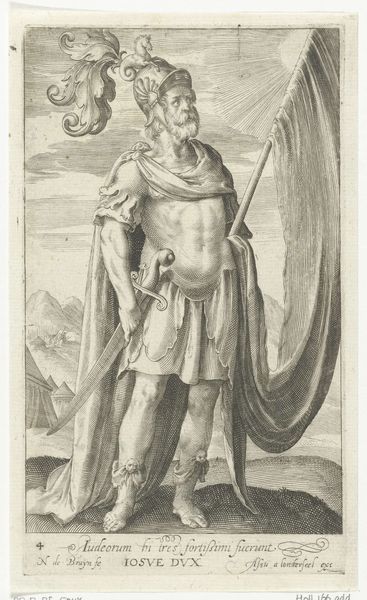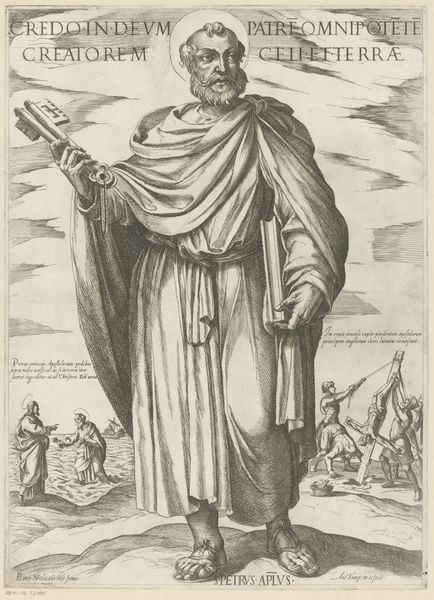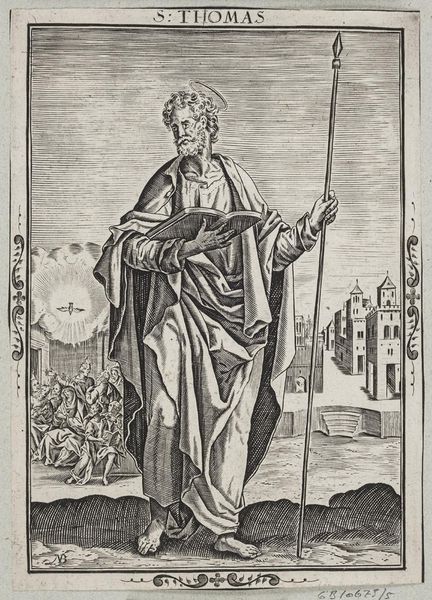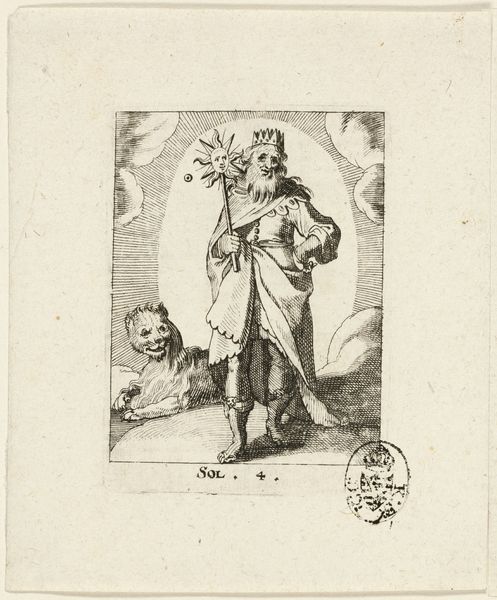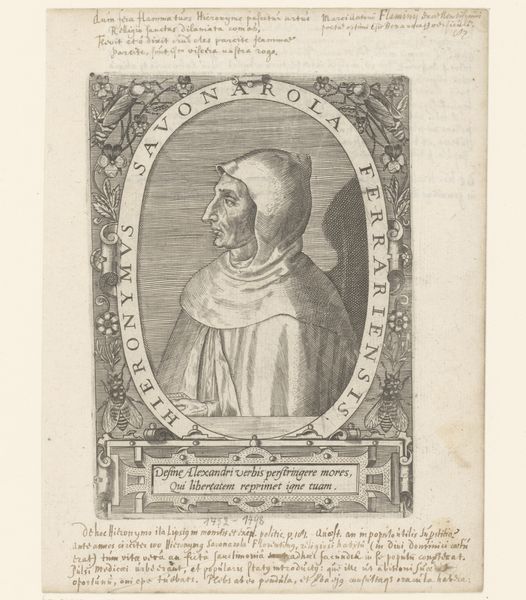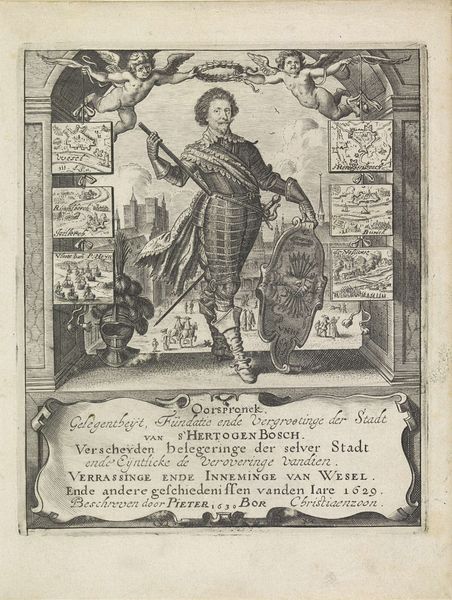
print, engraving
#
portrait
#
baroque
# print
#
figuration
#
line
#
engraving
Dimensions: height 216 mm, width 130 mm
Copyright: Rijks Museum: Open Domain
Curator: This engraving from 1624 by Jacob Matham, entitled "Blazon of the Guild of Saint James in Haarlem," immediately strikes me with its intricate linework. What’s your first impression? Editor: It’s got an arresting quality, definitely. There’s a formality to the figure—the almost severe expression and the rigidly held staff lend it a sense of imposing authority. But beneath that, the halo and the pilgrim's badge also communicate something more personal, almost vulnerable. Curator: That interplay you’ve picked up is important. Saint James, represented here, was often depicted as a pilgrim. This image links him to the Haarlem guild that adopted him as their patron saint, representing a connection to journeys, both physical and spiritual. Pilgrimages themselves were deeply entangled with notions of identity and penance at the time. Editor: The scallop shell, which recurs as a motif, definitely supports that. I also see, lower down, what appears to be the walled city of Haarlem depicted in the background and, on the other side of Saint James, a mass of tiny people that I assume is meant to represent pilgrims in transit. The meticulous detail is fascinating. How do you see the blend of the sacred and the civic playing out here? Curator: Power structures were never really too far from these overtly religious images, so for this engraving, class identity and faith are explicitly on display, intertwined through membership in the Guild of St. James. The guild members' commitment to social responsibility, to mutual aid within their community is what this artwork is trying to emphasize, not the church or the pilgrimage itself. What might have been revolutionary at the time can easily become institutional and patriarchal, which this clearly illustrates. Editor: That’s interesting, I'm so fascinated by what symbols accrue over time and what the symbolic presence tells us now about cultural memory. I suppose Matham's use of these enduring visual emblems ensures that, while the specific social and political concerns may fade, something of that original layered meaning persists. Curator: And something new always gets layered on. Even our reading of this today shifts the original valence, creating new potential meanings as we bring our 21st century values to the picture. Editor: Indeed. Art is a mirror, isn’t it, always reflecting both then and now?
Comments
No comments
Be the first to comment and join the conversation on the ultimate creative platform.
